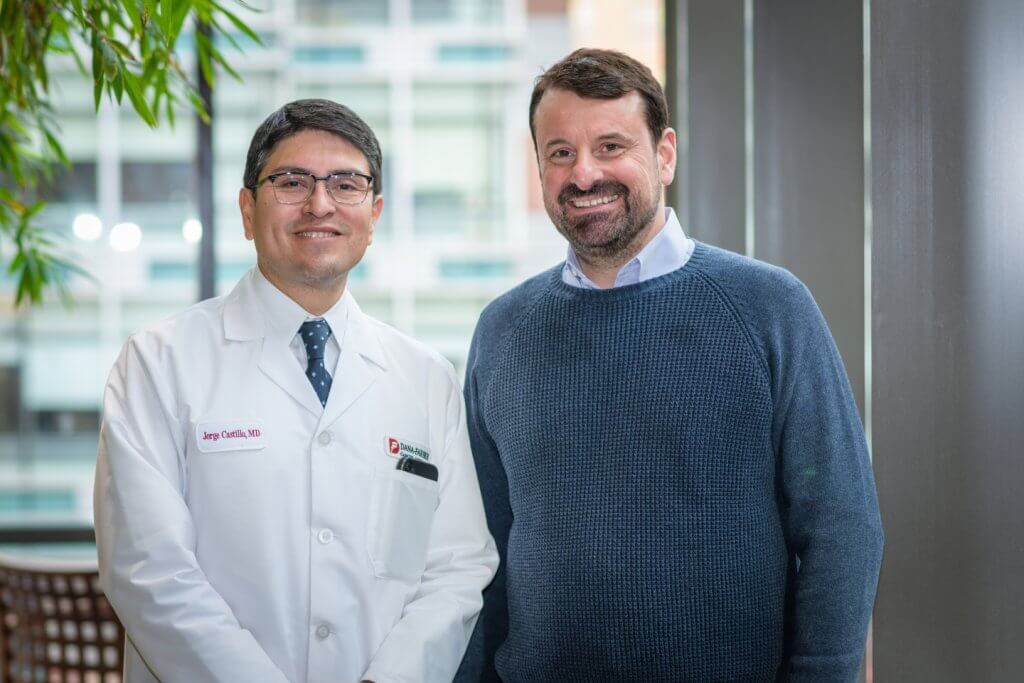When a clinical trial showed the targeted drug ibrutinib to be highly effective in patients with a form of lymphoma called Waldenström macroglobulinemia, the results were so compelling that the U.S. Food and Drug Administration approved the drug for all patients with the disease, even though the trial included only patients previously treated with other agents.
It was an uncharacteristically expansive decision for the FDA, which normally authorizes treatments only for the specific subset of patients in whom they’ve been tested. It turns out to have been well founded, though, as a recent study led by Dana-Farber investigators showed the drug can produce long-lasting responses as a front-line therapy in patients with Waldenström’s.
The study, published late last year in the journal Leukemia, presented the results of a phase II study involving 30 patients with Waldenström’s who received ibrutinib as their initial therapy.
A median of 50 months after the patients started taking ibrutinib, the overall response rate — the percentage of patients who benefited from the drug— was 100%. The major response rate— the percentage with a 50% or more drop in blood levels of IgM, a protein indicator of the extent of the disease— was 87%. And the very good partial response rate— the percentage whose IgM levels decreased by at least 90%— was 30%.
The drug proved to be fast-acting. The median time that patients showed a minor response after beginning ibrutinib was .9 months, and the median time to a major response was 1.9 months.
The duration of ibrutinib’s benefits was impressive as well. Four years after starting the therapy, 76% of the trial participants were alive with no worsening of their cancer.
“It’s not unusual for drugs that are effective in patients with relapsed cancers to be even more successful in previously untreated patients,” says Jorge Castillo, MD, who led the study with Dana-Farber colleague Steven Treon, MD, PhD. “The results of this study establish ibrutinib as one of the most active single-drug treatments for patients with Waldenström’s.”

Understanding Waldenström macroglobulinemia
Waldenström macroglobulinemia is a rare, slow-growing lymphoma of B cells that accounts for about 2% of all cases of non-Hodgkin lymphoma. It usually affects older adults and can cause sharp declines in red and white blood cell and platelet counts.
[Learn about the difference between non-Hodgkin lymphoma and Hodgkin lymphoma.]
One of the molecular hallmarks of the disease is the activation of the Bruton tyrosine kinase, or BTK, protein pathway, which promotes the survival of lymphoma cells. Ibrutinib binds to the BTK protein, hampering the growth and proliferation of B cells. In the early 2000s, researchers found that it kills laboratory lines of Waldenström cells, leading to clinical trials of the drug in patients.
The early laboratory work showed that Waldenström cells with mutations in the CXCR4 gene tended to be less susceptible to ibrutinib. In the new paper, Castillo, Treon, and their associates found that the very good partial response rate was significantly lower in patients whose tumor cells harbored CXCR4 mutations, and it often took longer for them to achieve a major response.
The most common side effects of ibrutinib treatment were fatigue, upper respiratory infection, and bruising. Twenty percent of patients experienced atrial fibrillation, or irregular heartbeat.
With the new study, ibrutinib joins chemotherapy and certain combination-drug regimens as a standard primary therapy for patients with Waldenström’s, the study authors say.
“The results of ibrutinib treatment are very much in line with what can be achieved with other options,” Castillo states.
The decision of which treatment to use is best made by doctors in consultation with patients.
“The best treatment is personalized treatment,” Castillo says, “in which the patient knows and understands the potential benefits and risks of each option and has the information necessary to make the decision that’s right for them.”
